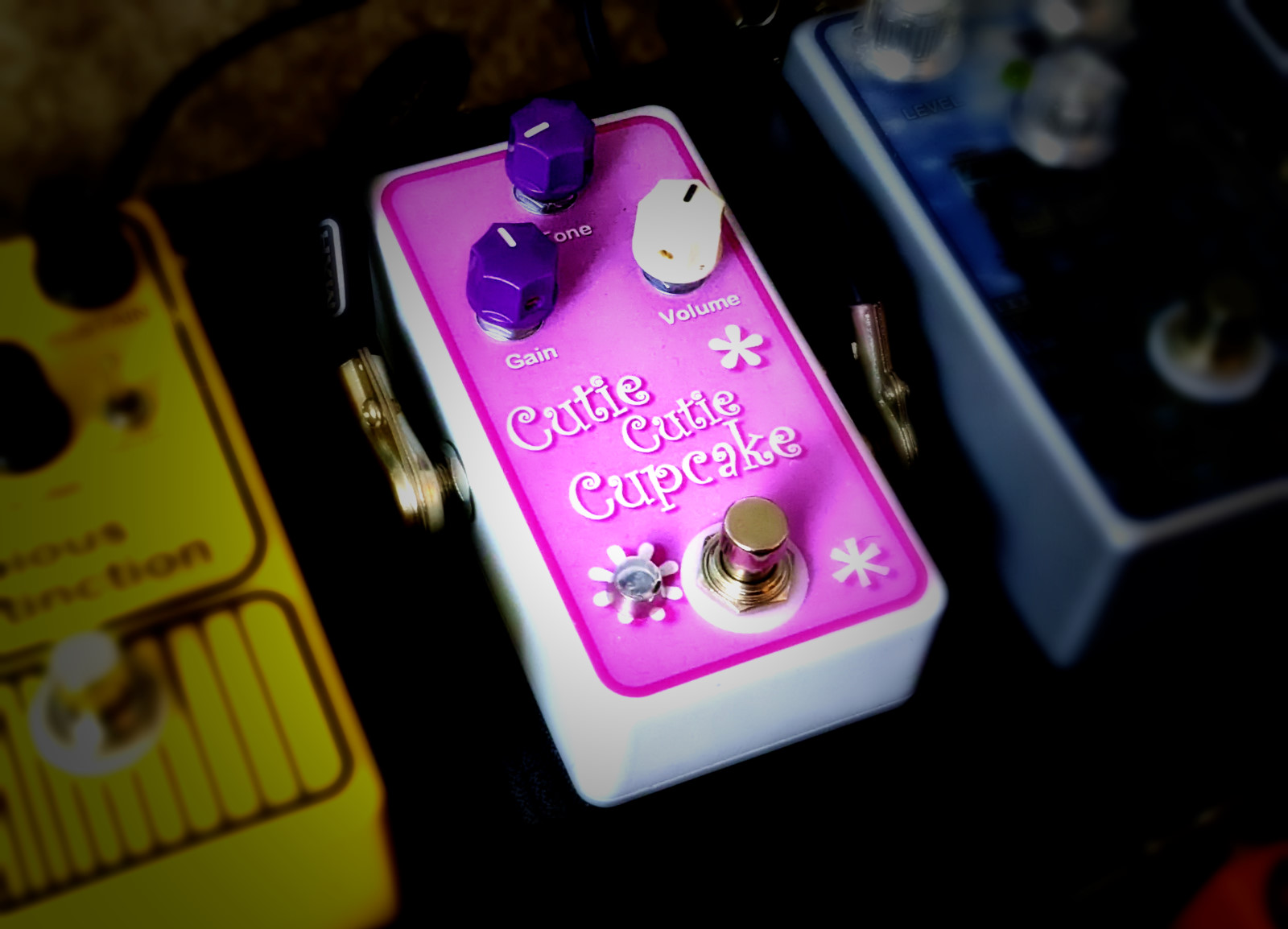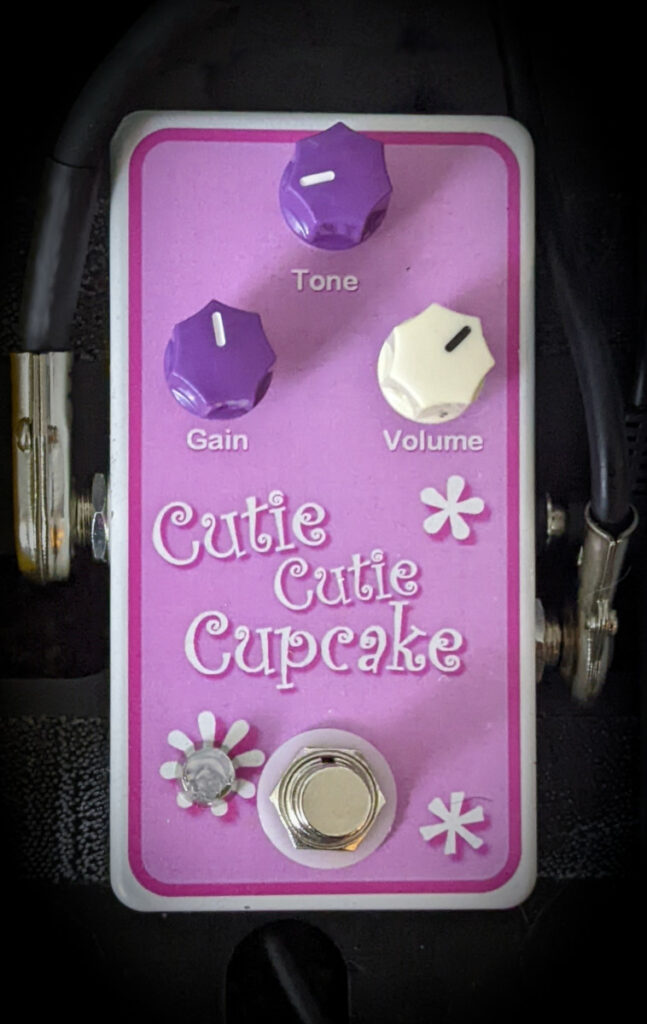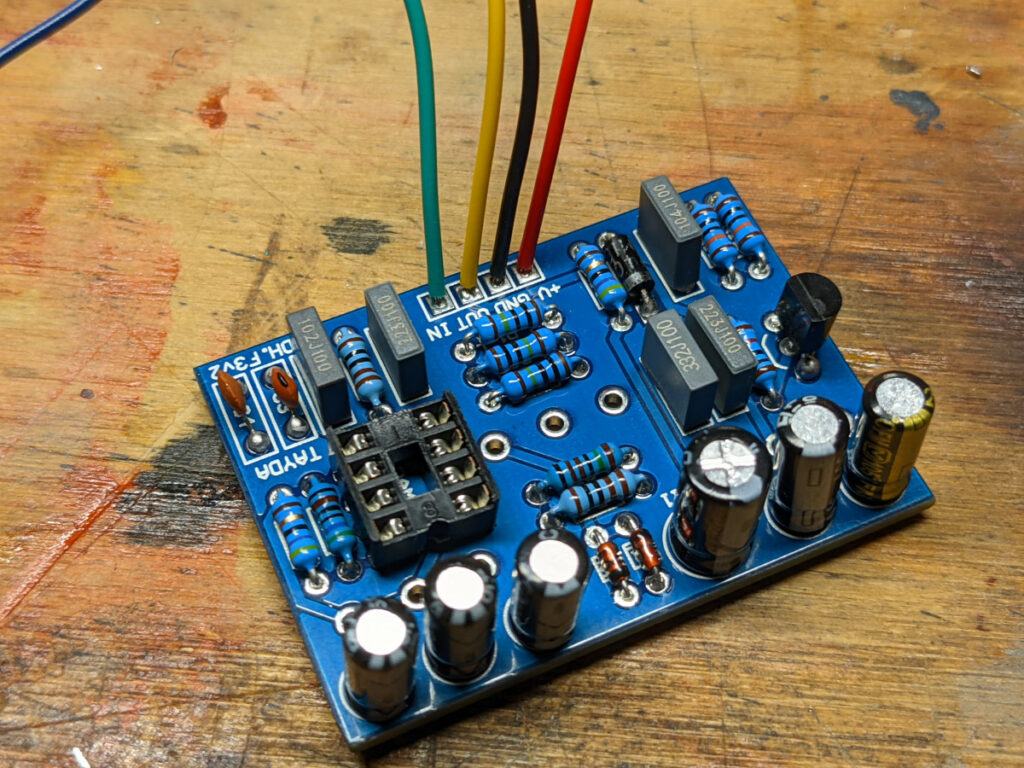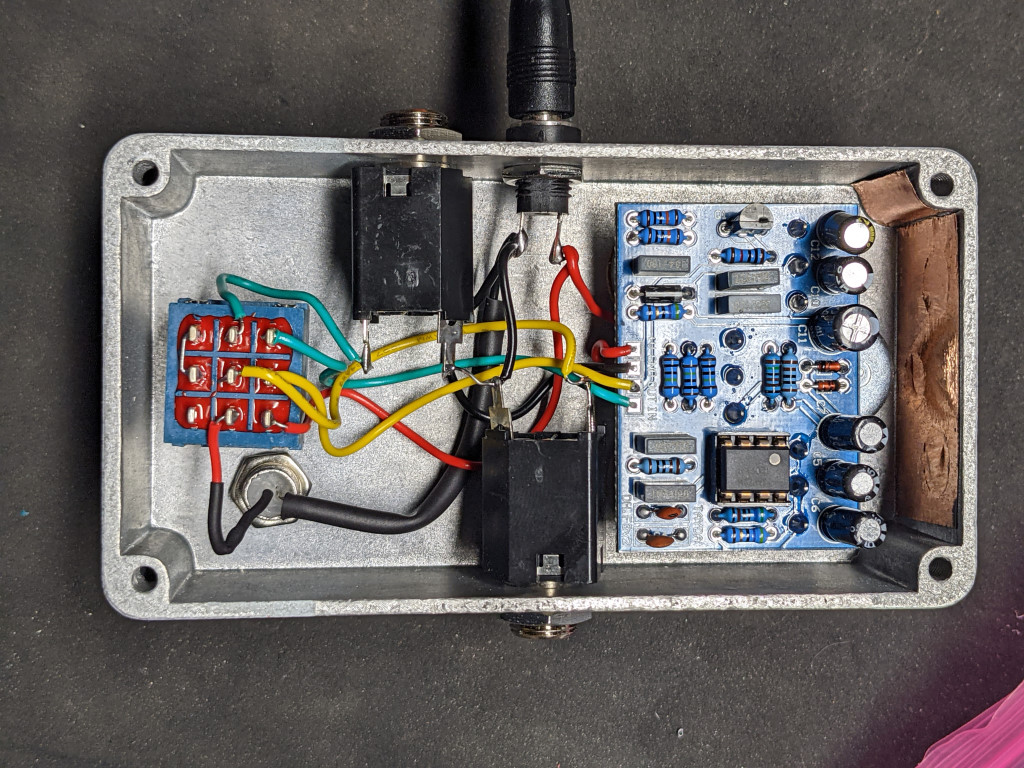

Details
Pro Co made the first RAT pedal in 1978 in Kalamazoo, Michigan. It’s still in production today, and has become a classic distortion pedal, spawning many variants both from Pro Co and the pedal-building community at large. This is yet another one.
Pro Co RAT pedals are traditionally painted black. Most of the “RAT-inspired” pedals are also black, and have some murine name, like the Ratsbane, Ratatouille, Pack Rat, Ratatak, Rat Bastard, etc. I decided to go hard the other way. Of course, when I designed the label, I was just trying to think of a cutesy name and didn’t consider where Cutie Cutie Cupcake came from. It wasn’t until some time later that I realized that that I got it from the name of Princess Carolyn’s mom on BoJack Horseman, who is a cat (voiced by David Sedaris, the brother of Amy Sedaris who voices Princess Carolyn). So I guess I was subconsciously going for some kind Tom & Jerry dynamic. Ugh.
Among the popular DIY pedal kits and circuit board makers, most RAT-inspired pedals have a ton of mods built-in with extra knobs and switches for added functionality. The thing that fascinated me about the RAT is that it’s used by a lot of guitar players in completely different genres—David Gilmour, Peter Buck, James Hetfield, John Scofield, et al. They didn’t need any extra knobs, so I wanted to keep it simple. I wound up getting a uncomplicated board from Tayda.
It will get pretty filthy, bordering on fuzz, or can be backed off for a wide range of distortion sounds. I like it. It’s on my pedal board right now.
Rat Op-Amps
Tayda just sells the printed circuit boards and you buy whatever parts you want to solder to them separately, so I had a to source an op-amp for Cutie Cutie Cupcake. The RAT is a hard-clipping circuit, where an op-amp boosts the signal and a couple diodes down the line snip the tops off. The originals came with an op-amp called an LM308, which is considered the holy grail of RAT tone by many pedal nerds. They’ll say that nothing else comes close. But LM308s went out of production years ago and, like Quaaludes, the ones that still exist are expensive and/or fake. I initially put a TL071 in it, which is generally considered among the worst options, but it’s what I had on hand. I was curious though, so I went way up the list to an OP07 chip (which is considered to be closer in sound to the original LM308) the next time I had to order something. The op-amp is in a socket, so it can easily be switched out and A/B tested. It’s different by maybe 1% to my ears. I can technically hear a difference, but to say that one is good and one is bad is absurd. The OP07 had a slightly quieter noise floor, so I left it in, but honestly the pedal sounds the same with either. I realize that I still haven’t heard an LM308, and maybe the circuit or layout isn’t exact enough to bring out the best of it, or that I have the wrong diodes in the clipping section, yadda yadda, but I’m not convinced it matters.
Vital Stats
Sound
The following example, which is a completely original composition that I am calling “What’s the Frequency, Kensington?” is the Junior into the Cutie Cutie Cupcake (with the gain set around 3 o’clock) into a basically clean Fender Deluxe.


